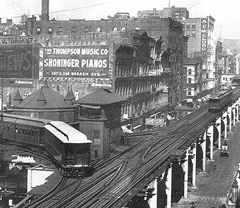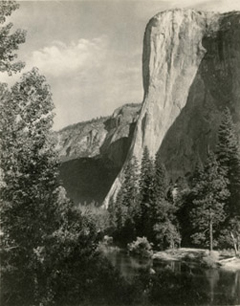| american myth | |||
| UP.DANIEL LUSTER | |||
|
|
[keywords] pastoral Idealism, narraitve, the home, wilderness, flight, expansion[background] Myth has developed the connotation of an archaic or outmoded construct of past societies that was necessary for people who did not understand science and subsequently the world but now is unnecessary for people as advanced as ourselves. This, however, is neither a true understanding of myth or of culture, but rather it seems that myth is always present in culture, always active and most importantly directing how we live, act and ultimately make objects in the world. It seems important to understand the myths at work in our current and past cultural paradigms as Americans, a people who have in the past been characterized with what would seem to be an obsession for myth. It was the new world and the ‘wilderness’ it offered that drew so many to the uncharted world in search of some new and untamed nature. The Pastoral ideal then permeated everything that we did as a culture until the Columbian Exposition in 1893 when the West was officially ‘closed’ and the vision of American culture seemed to turn to a moment to the cityand its possiblities for our culture. Finally, Post World War Two, there was a presence of the modern American 'home', a myth perpetuated by growing consumerism and newly founded field of advertising. These three myths are not discontinuous incidents but rather work their way through our collective understanding of place: Terrains, Confines, and Containers. [terrains] The pastoral landscapes and their affect upon our relationship to the exterior world. [confines] The city in america, offering a future that was quickly left for a myth of the suburban life. [containers] The home as a place to escape.
[references] Laurence Coupe, Myth (New York: Routledge, 2009) Leo Marx, The Machine and the Garden (Oxford: Oxford University Press, 2000). Stuart Wrede, "Landscape and Architecture: The Work of Erik Gunnar Asplund," Perspecta,vol.20 (1983):195-214. Iris Aravot, "Narrative-Myth and Urban Design," Journal of Architectural Education Vol. 49, no. 2 (1995): 79-91. Beatriz Colomina, Domesticity at War (Cambridge: MIT Press, 2007) Christine Macy and Sarah Bonnemaison, Architecture and Nature: Creating the American Landscape (New York: Routledge, 2003
barriers | landscapes of war | postcard | tourisms | reasonable war | american myth |
|
|
|||
 |
|||
| 02 | |||
|
|||
01. image of El Capitan, Ansel Adams, Anseladams.com 02. image of turn of the century Chicago, showing the changing nature of the industrial city from Chicago-L.org 03. image of the ideal family from the 1950s. from weburbanist.com |
|||
| © university of tennessee college of architecture and design | |||

